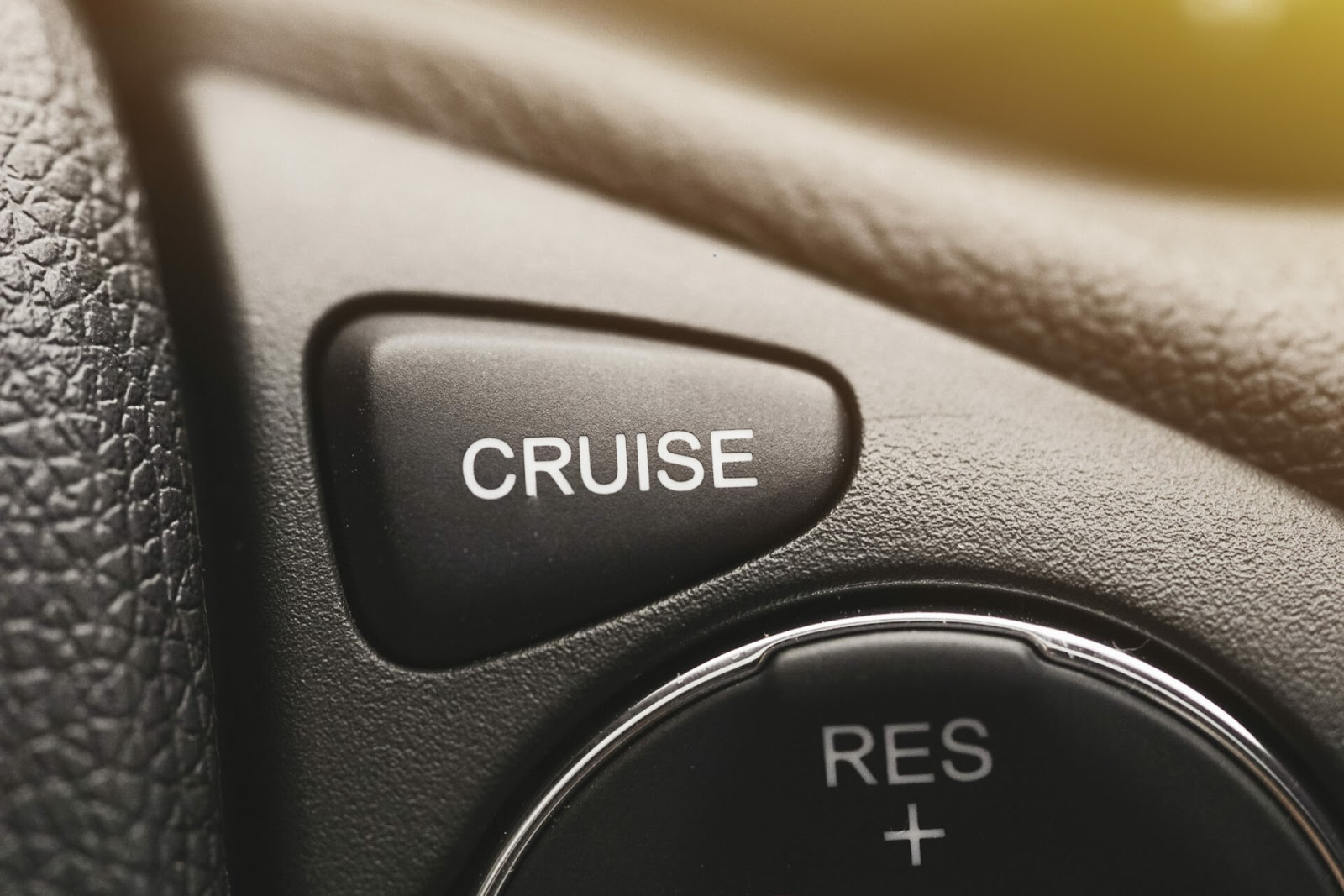Getting to Know Cruise Control: How to Use It for Fuel Efficiency and Travel Comfort

(Photo credit: gogirl)
For long-distance travelers or those who frequently drive on open roads, Cruise Control is one of the convenience features that can truly make driving more relaxing and fuel-efficient.
However, many people might still hesitate to use it or don't fully understand how to use it correctly. This article will introduce you to the Cruise Control system and provide tips for its optimal use.
What is Cruise Control?
Cruise Control is an automatic speed control system for your vehicle. Once activated, the system will maintain the car's speed at a constant rate based on your set preference, without you having to continuously press the accelerator pedal. This allows the driver to rest their right foot, reduces fatigue on long drives, and helps maintain a consistent speed, which positively impacts fuel consumption.
How Cruise Control Works
The Cruise Control system operates by regulating the fuel supply to the engine to match the set speed. If the car drives uphill, the system will increase fuel delivery to maintain speed. If the car drives downhill, the system will reduce fuel delivery or may even engage engine braking (depending on the car model) to prevent the speed from exceeding the set limit.
Using Cruise Control (Basic Buttons)
While button locations may vary between car models, the main buttons generally include:
- ON / OFF: Button to turn the Cruise Control system on or off.
- SET / SET-: Button to set the current speed or decrease the set speed.
- RES / RES+: Button to resume the previously set speed or increase the set speed.
- CANCEL: Button to temporarily deactivate the system, while keeping it on (e.g., when you press the brake, the system automatically deactivated).
Tips for Using Cruise Control for Efficiency and Comfort
1. Use on Open Roads with Stable Traffic
- Most suitable: Highways and motorways with light traffic and infrequent obstructions.
- Avoid using: In congested traffic, city driving with frequent stops and accelerations, very steep downhill roads, or winding roads. This will require frequent braking or system cancellation, putting strain on the system and potentially consuming more fuel than normal driving.
2. Set an Appropriate Speed
- Set the speed you intend to drive, which should adhere to legal limits and be suitable for road conditions, allowing the car to maintain the most consistent speed.
- Setting an excessively high speed will result in higher fuel consumption than usual.
3. Learn to Adjust Speed with Buttons
Instead of pressing the brake to reduce speed and having to reset it completely, use the SET- button to decrease speed or RES+ to increase speed incrementally (usually by 1-2 km/h). This helps maintain a consistent fuel consumption level.
4. Cancel the System When Necessary
When you need to slow down quickly (e.g., another car cuts in, there's an obstruction), press the brake. The Cruise Control system will deactivate immediately. Alternatively, press the CANCEL button to temporarily deactivate it. Once the situation returns to normal, you can press RES to resume the previously set speed without having to reset it.
5. Be Cautious in Poor Weather Conditions
Avoid using Cruise Control on wet, slippery, flooded, or icy/snowy roads. This can easily lead to loss of control, as the system cannot respond to changing road surfaces as quickly as manual control.
Benefits of Using Cruise Control
- Reduced fatigue: Helps the driver relax their leg muscles, reducing tiredness on long journeys.
- Fuel efficiency: Maintaining a consistent speed reduces unnecessary acceleration and braking, allowing the engine to operate steadily, which positively impacts fuel consumption.
- Traffic discipline: Makes it easier for drivers to maintain speeds within legal limits.
Important Considerations
- Never take your eyes off the road: While the system allows you to rest your foot, your attention and awareness must remain on driving at all times.
- Be aware of the car ahead: In traditional (Non-Adaptive) Cruise Control systems, the car cannot detect the vehicle in front. You are still responsible for maintaining a safe distance and braking yourself. (If your car has Adaptive Cruise Control, it can automatically maintain distance).
- Know the system's limitations: Cruise Control is not designed to drive for you. You remain the primary controller of the vehicle.
Understanding and correctly using the Cruise Control system will enhance your driving comfort, reduce fatigue, and genuinely help you save on travel costs. Don't hesitate to try using this feature on your next drive!
Claim your free car valuation today!
Read More: Understanding Automatic Transmissions: Tips for Using D, L, S, and P for Maximum Efficiency
Looking for a car appraisal? You can contact us for a free car valuation within 24 hours…
